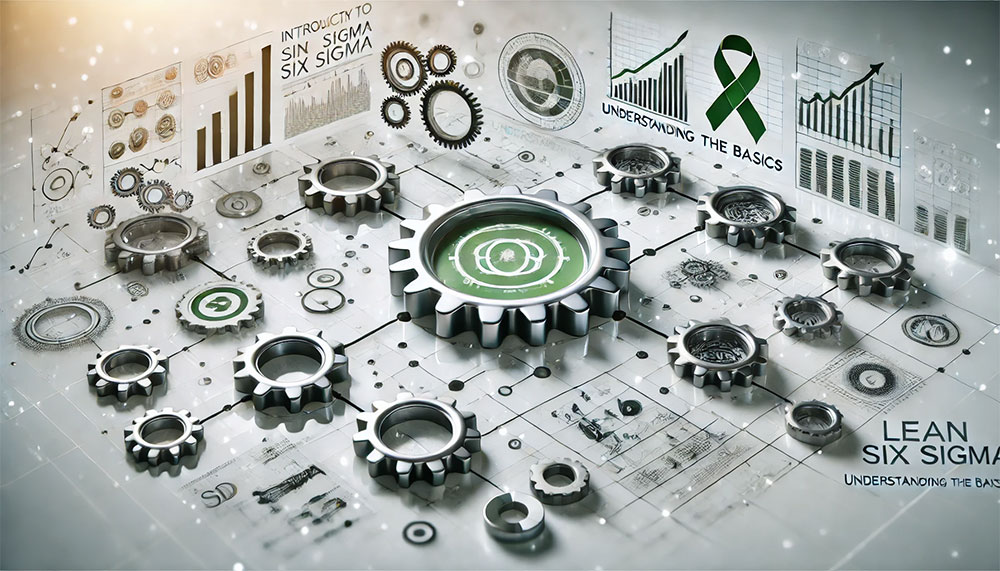Lean Six Sigma is a methodology that combines two powerful process improvement approaches—Lean and Six Sigma—to enhance performance by systematically removing waste, reducing variation, and improving quality in business processes. This structured method has been widely adopted in industries such as manufacturing, healthcare, finance, and software development to drive efficiency, cost savings, and customer satisfaction.
Let’s break down the basics:
- What is Lean?
Lean focuses on eliminating waste and maximizing value from the customer’s perspective. It originated from the Toyota Production System and is centered on improving processes by removing activities that do not add value, known as the 7 Wastes:
- Overproduction: Producing more than is needed.
- Waiting: Idle time when no work is being done.
- Transportation: Unnecessary movement of products.
- Over-processing: Doing more work than necessary.
- Inventory: Excess materials or products.
- Motion: Unnecessary movement of people.
- Defects: Products that do not meet quality standards, leading to rework.
Lean’s goal is to streamline operations, increase speed, and deliver better value to the customer by focusing on continuous improvement.
- What is Six Sigma?
Six Sigma is a data-driven methodology that aims to reduce defects and variability in processes. It was originally developed by Motorola in the 1980s and has been used extensively to enhance quality and efficiency. Six Sigma focuses on:
- Defining, Measuring, Analyzing, Improving, and Controlling (DMAIC) processes.
- Reducing defects and ensuring process outputs meet customer expectations.
- Achieving statistical control and reducing process variation to within ±3.4 defects per million opportunities (DPMO), which translates to a Six Sigma level of quality.
The Six Sigma methodology emphasizes the use of statistical tools to identify root causes of defects and implement sustainable solutions.
- How Lean and Six Sigma Work Together
Lean focuses on speed and waste elimination, while Six Sigma focuses on quality and defect reduction. Together, they form Lean Six Sigma, a hybrid approach that:
- Eliminates wasteful activities while ensuring that processes are predictable and produce high-quality results.
- Uses both Lean principles to improve speed and Six Sigma techniques to ensure precision and consistency.
- Key Concepts and Tools
DMAIC: This is the core process improvement method in Six Sigma, focusing on five phases: Define, Measure, Analyze, Improve, and Control.
- Value Stream Mapping (VSM): A Lean tool to visualize processes and identify non-value-added activities (wastes).
- Kaizen: A Lean concept for continuous improvement through small, incremental changes.
- Root Cause Analysis: Methods like 5 Whys and Fishbone Diagrams (Ishikawa) help identify the underlying causes of issues.
- Control Charts: A Six Sigma tool used to monitor process performance over time.
- 5S: A Lean tool that organizes workspaces to improve efficiency—Sort, Set in Order, Shine, Standardize, Sustain.
- Benefits of Lean Six Sigma
Increased Efficiency: By eliminating waste and reducing defects, processes become more streamlined and cost-effective.
- Improved Quality: Variability and defects are minimized, ensuring higher consistency in product or service delivery.
- Cost Reduction: Reducing waste and improving process efficiency leads to significant savings.
- Higher Customer Satisfaction: Faster, high-quality outputs lead to better customer experiences and loyalty.
- Employee Engagement: Lean Six Sigma fosters a culture of continuous improvement, encouraging employees to take ownership of process improvements.
- Certification Levels
Lean Six Sigma practitioners can obtain certifications based on their level of knowledge and experience:
- White Belt: Basic understanding of Lean Six Sigma principles.
- Yellow Belt: Participation in project teams and contribution to process improvement.
- Green Belt: Leading smaller projects or working under Black Belt supervision.
- Black Belt: Leading larger projects and mentoring other team members.
- Master Black Belt: Highest level, focused on strategy and mentoring Black Belts and Green Belts.
Conclusion
Lean Six Sigma offers a robust framework for businesses to improve processes by reducing waste and variation. Whether a company seeks to increase speed, enhance quality, or both, Lean Six Sigma equips them with the tools and mindset necessary for continuous improvement and operational excellence. It is a methodology that fosters collaboration, accountability, and sustained success in achieving business objectives.





